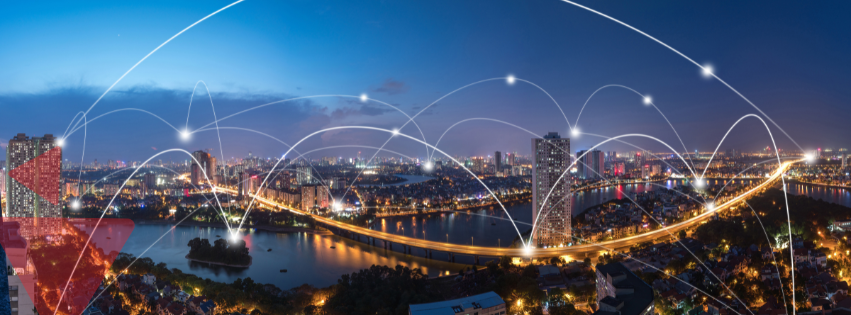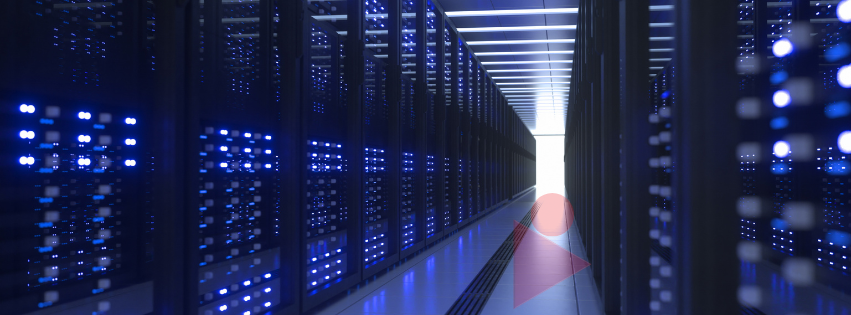The increasing data demand is a consequence of technological advancements, changing user behaviors, and the integration of data-driven solutions into various aspects of our lives. Innovative solutions are essential to address these demands, ensuring that networks and technologies can keep pace with the evolving landscape of data usage and provide efficient, reliable, and future-ready connectivity. Let's dive in to know how Light Fidelity can help.
By- Shekhar Goyal

Introduction
The need for innovative solutions in the era of increasing data demand arises from several interconnected factors, reflecting the evolving nature of technology and its pervasive impact on various aspects of our lives. Here are some key reasons highlighting the necessity for innovation in addressing the surge in data demand.
Exponential Growth of Data Usage
The digital transformation across industries, the proliferation of smartphones, and the advent of the Internet of Things (IoT) have led to an unprecedented growth in data generation. People and devices are creating and consuming data at an accelerating rate.
Emergence of New Technologies
Technologies such as artificial intelligence, augmented reality, virtual reality, and 5G networks are becoming more prevalent. These advancements not only demand more data but also require faster and more efficient means of data transfer and processing.
Increasing Connectivity Requirements
The need for constant connectivity has become integral to both personal and professional activities. From remote work and online education to smart homes and connected devices, seamless and reliable connectivity is essential.
Data-Intensive Applications
Applications and services, such as video streaming, online gaming, virtual meetings, and cloud-based services, require large amounts of data. These data-intensive applications necessitate robust and high-speed networks to deliver a satisfactory user experience.
Business and Industrial Demands
Businesses and industries are leveraging data for analytics, decision-making, and process optimization. The demand for real-time data processing and transmission is crucial for staying competitive and responsive in a rapidly changing environment.
Global Interconnectedness
The world is becoming more interconnected, with data flowing across borders for communication, commerce, and collaboration. This global interconnectivity places demands on infrastructure to support the seamless transfer of data across diverse geographic locations.
Innovation in Services and Experiences
Innovations in services and experiences, such as augmented reality applications, autonomous vehicles, and smart cities, require sophisticated and high-bandwidth data networks to function effectively.
User Expectations and Quality of Service
Users have come to expect fast, reliable, and high-quality connectivity. Meeting these expectations requires continuous innovation to improve network speed, capacity, and efficiency.

In summary, the increasing data demand is a consequence of technological advancements, changing user behaviours, and the integration of data-driven solutions into various aspects of our lives. Innovative solutions are essential to address these demands, ensuring that networks and technologies can keep pace with the evolving landscape of data usage and provide efficient, reliable, and future-ready connectivity.
LiFi (stands for "Light Fidelity") is an innovative wireless communication technology that utilizes visible light, infrared, and ultraviolet spectrum for data transmission. Unlike traditional wireless technologies like Wi-Fi that use radio frequency signals, LiFi leverages light waves emitted by LED bulbs to transmit data. The concept was first introduced by Professor Harald Haas in 2011.
The potential impact of LiFi on wireless communication is significant and holds promise for several reasons like:
1. High-Speed Data Transfer
2. Enhanced Security
3. Reduced Electromagnetic Interference
4. Potential for Ubiquitous Connectivity
5. Applications Across Industries
Understanding Light Fidelity
How LiFi Works:
LiFi technology operates on the basic principle of using light waves, specifically the visible light spectrum, for data transmission. The key components of LiFi technology include LED (Light Emitting Diode) light sources, photodetectors, and modulation techniques.
Here are the basic principles behind LiFi technology:
• Light Modulation: LiFi relies on the principle of modulating the intensity of light to encode data. This modulation is typically achieved by rapidly varying the brightness of the light source. These rapid changes in light intensity are imperceptible to the human eye.
• LED Light Sources: LED bulbs serve as the primary light sources in LiFi systems. These LEDs can be quickly dimmed or brightened, and this modulation is used to encode binary data. Each fluctuation in light intensity represents a binary digit (0 or 1).
• Data Transmission: To transmit data, the LED light source is modulated to create a sequence of light pulses. The modulation pattern corresponds to the data being transmitted. For example, turning the light on and off in a specific pattern can represent binary code.
• Photodetectors: Devices equipped with photodetectors, such as photodiodes or photodiode arrays, are used to capture the variations in light intensity. These photodetectors convert the received light signals into electrical signals.
• Data Reception: At the receiving end, the electrical signals from the photodetectors are processed to extract the encoded data. This process involves decoding the light intensity variations back into the original binary data.
• Line-of-Sight Communication: LiFi communication typically requires a direct line of sight between the LED transmitter and the receiving device equipped with photodetectors. This is because visible light does not penetrate obstacles, offering a degree of inherent security as the signal is confined to the illuminated area.
• Integration with Networking Protocols: LiFi technology can be integrated with existing networking protocols to enable seamless communication. This includes protocols for Internet Protocol (IP) communication, allowing LiFi to function as part of a broader network infrastructure.
By using visible light as the medium for data transmission, LiFi offers several advantages, including high data transfer rates, reduced electromagnetic interference, and enhanced security due to the localized nature of the light signal. However, it's important to note that LiFi does have limitations, such as the requirement for line-of-sight communication and sensitivity to ambient light conditions. Ongoing research aims to address these limitations and further develop LiFi technology for practical applications.
Advantages of LiFi
High Data Transfer Rates: LiFi can provide significantly higher data transfer rates compared to traditional wireless technologies such as Wi-Fi. This is due to the broader available bandwidth in the visible light spectrum.
• Increased Security: LiFi signals are confined to the illuminated area, providing a level of inherent security. Since light does not penetrate through walls, it can enhance the privacy and security of data transmission, reducing the risk of unauthorized interception.
• Reduced Electromagnetic Interference: LiFi operates in the optical spectrum using visible light, avoiding interference with radio frequency signals. This characteristic makes LiFi suitable for environments where electromagnetic interference can be a concern, such as in hospitals or industrial settings.
• No Spectrum Crunch: As LiFi uses the visible light spectrum, which is significantly larger than the radio frequency spectrum, it helps alleviate issues related to spectrum scarcity. This can be particularly beneficial in crowded urban areas where radio frequency spectrum congestion is a challenge.
• Enhanced Energy Efficiency: LED bulbs, which are commonly used as the light source in LiFi systems, are energy efficient. LiFi technology leverages existing lighting infrastructure, potentially reducing the overall energy consumption compared to deploying separate systems for lighting and data communication.
• Integration with Existing Infrastructure: LiFi can be integrated into existing lighting systems, allowing for a seamless deployment in various environments. This integration can make it easier to adopt LiFi technology without the need for significant infrastructure changes.
• Applicability in Electromagnetically Sensitive Environments: LiFi is suitable for environments where traditional wireless technologies may be restricted or problematic due to electromagnetic sensitivity, such as in aircraft cabins, hospitals, or research laboratories.
• Potential for Dense Data Environments: In scenarios where many devices require high-speed connectivity in a limited space, such as auditoriums, conference rooms, or dense urban areas, LiFi can provide a solution by leveraging the large available bandwidth in the visible light spectrum.
• Low Latency: LiFi systems can achieve low latency, making them suitable for applications that require real-time communication, such as virtual reality (VR) or augmented reality (AR).
Challenges and Limitations
Line-of-Sight Communication: LiFi typically requires a direct line of sight between the transmitting LED light source and the receiving device equipped with photodetectors. Obstacles such as walls or physical obstructions can disrupt the signal, limiting the flexibility of LiFi in certain environments.
• Sensitivity to Obstructions: Even minimal obstructions between the transmitter and receiver, such as a person walking in the line of sight, can interrupt the LiFi signal. This sensitivity makes LiFi less suitable for scenarios where continuous line-of-sight communication is challenging.
• Dependence on Lighting Infrastructure: LiFi relies on the availability of LED lighting infrastructure. In environments where traditional lighting is not used or where the lighting is turned off, LiFi communication may not be possible. This limits its applicability in certain settings.
• Susceptibility to Ambient Light Conditions: LiFi communication can be affected by ambient light conditions, including natural light from the sun or other light sources. External light sources may introduce interference and impact the reliability of the LiFi signal.
• Limited Range: The range of LiFi communication is generally shorter compared to some traditional wireless technologies like Wi-Fi. This limitation makes LiFi more suitable for specific use cases where devices are in close proximity.
• Scalability Challenges: Implementing LiFi in large-scale deployments may pose challenges in terms of scalability. Ensuring consistent and reliable coverage across extensive areas might require careful planning and infrastructure considerations.
• Integration with Existing Technologies: Integrating LiFi with existing networking technologies can be a complex process. Seamless handovers between LiFi and other wireless technologies might require additional development to ensure a smooth transition.
• Device Mobility Challenges: LiFi may face challenges in scenarios where devices are highly mobile. Maintaining a stable connection while moving between different light sources might require advanced tracking and handover mechanisms.
• Specialized Equipment Required: Both the transmitting LED light source and the receiving device need to be equipped with specialized components (modulation and detection capabilities) for LiFi communication. This requirement may limit the ease of adoption compared to more ubiquitous wireless technologies.
• Immaturity in Standardization: LiFi standards are still evolving, and there is no universal standard for LiFi technology. This lack of standardization may lead to compatibility issues and hinder widespread adoption.
Despite these limitations, ongoing research and development in LiFi aim to address these challenges and enhance its capabilities. LiFi may find niche applications where its advantages, such as high data transfer rates and enhanced security, outweigh its limitations.

Applications of LiFi:
- Office Environments:
Use Case: High-Speed Data Transfer in Workspaces
• Reasoning: Offices often require reliable and high-speed internet access for tasks such as file sharing, video conferencing, and collaborative work. LiFi can provide a secure and fast communication channel, enhancing productivity in office environments.
2. Healthcare Facilities:
Use Case: Secure Communication in Hospitals and Clinics
• Reasoning: The sensitivity of healthcare equipment to electromagnetic interference makes LiFi an attractive option for communication within healthcare facilities. It can support secure data transfer for medical devices, patient records, and communication between healthcare professionals.
3. Educational Institutions:
Use Case: Enhanced Connectivity in Classrooms and Lecture Halls
• Reasoning: LiFi can improve communication in educational settings by offering high-speed internet access in classrooms and lecture halls. It supports online learning, collaborative projects, and multimedia content delivery, enhancing the overall educational experience.
4. Smart Buildings:
Use Case: Integration with IoT Devices for Building Automation
• Reasoning: LiFi can be integrated with IoT devices in smart buildings, enabling seamless communication between sensors, smart lighting systems, and other connected devices. This application contributes to building automation, energy efficiency, and overall smart infrastructure.
5. Retail Spaces:
Use Case: Location-Based Services and Customer Engagement
• Reasoning: LiFi can provide location-based services in retail environments, delivering targeted information and promotions to customers' devices. It enhances customer engagement, supports indoor navigation, and enables personalized shopping experiences.
6. Conference Rooms and Meeting Spaces:
Use Case: Reliable Connectivity for Meetings and Presentations
• Reasoning: LiFi can ensure reliable and high-speed connectivity in conference rooms and meeting spaces. It provides a dedicated communication channel for video conferencing, presentations, and collaborative work, minimizing interference from neighboring Wi-Fi networks.
7. Internet of Things (IoT):
Use Case: IoT Connectivity in Smart Buildings
• Reasoning: LiFi's potential for handling a large number of connected devices in a confined space makes it well-suited for the dense deployment of IoT devices typical in smart buildings. This includes devices such as occupancy sensors, environmental monitors, and smart thermostats

Current Progress and Future Prospects
LiFi technology is still in the early stages of commercial adoption, and its market presence was not as widespread as some other wireless communication technologies like Wi-Fi. However, the technology has been evolving, and some companies have made advancements in LiFi research, development, and deployment.
Key points regarding the status of LiFi technology is given as:
1. Research and Development:
Numerous research initiatives and academic studies have continued to explore and enhance LiFi technology. Researchers are working on addressing limitations, improving efficiency, and expanding the potential use cases of LiFi.
2. Commercial Products and Deployments:
Some companies have started introducing LiFi products and solutions for specific applications. These may include LiFi-enabled LED lighting systems, LiFi dongles, and LiFi transceivers. However, the deployment has often been in niche or controlled environments rather than widespread commercial adoption.
3. Industry Partnerships:
LiFi technology has seen interest from various industries, and partnerships have been formed between LiFi technology providers and other companies. These collaborations aim to integrate LiFi into existing systems and explore new applications.
4. Standardization Efforts:
Standardization is crucial for the widespread adoption of any technology. Efforts have been made to establish standards for LiFi to ensure interoperability and compatibility between different LiFi devices and systems.
5. Potential Applications:
While LiFi has shown promise in various applications such as indoor communication, IoT, and smart lighting, its commercial use has often been in specific sectors where its advantages, such as high data transfer rates and reduced interference, are particularly valuable.
6. Awareness and Education:
There has been an effort to increase awareness and educate the market about LiFi technology. This involves promoting the benefits of LiFi and explaining how it can complement or provide an alternative to existing wireless communication technologies.
7. Challenges and Considerations:
LiFi faces challenges related to line-of-sight communication, device mobility, and the need for specialized infrastructure. The technology may be more suited to specific use cases and environments where its advantages outweigh these challenges.
8. Evolution of Standards:
Standardization bodies and organizations are actively working on defining and refining standards for LiFi technology. This process is essential for ensuring compatibility, security, and scalability as the technology matures.
Conclusion
LiFi has the potential to revolutionize the way we perceive and implement wireless communication, offering faster speeds, enhanced security, and solutions to some of the limitations faced by existing technologies. As research and development in LiFi continue, it may play a pivotal role in shaping the future of wireless connectivity.
Get in touch with Telenity to explore customizable platforms for Employee tracking, Fleet tracking, and location-based APIs for your business at [email protected]



